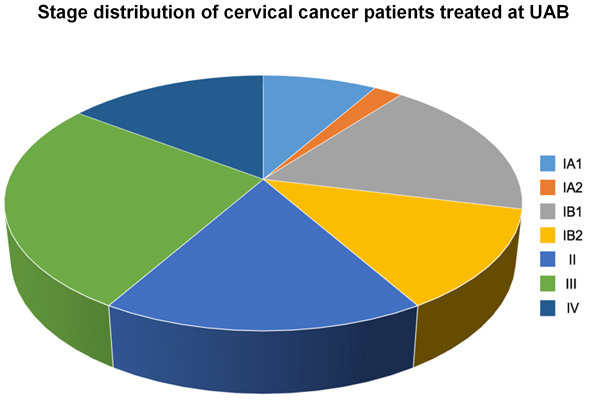Johns Hopkins Medicine, located in Baltimore, MD, serves the medical needs of a multi-racial population from Baltimore and the surrounding tri-state region. The clinical patient care and service resources available at Johns Hopkins will be well-integrated with the research activities of the Cervical Cancer SPORE. Patients will be recruited from the Johns Hopkins Colposcopy Service, the Kelly Gynecologic Oncology Service, and from referring physicians. The Colposcopy Service treats over 800 patients annually, approximately 15% of whom have high-grade lesions, about 2/3 of which are CIN3. Of these, approximately 60% of CIN3 cases are caused by HPV16. Roughly 1/3 of these cases are in women who are African American. This SPORE will also recruit patients for trials from other hospital centers, including the Johns Hopkins Bayview Medical Center and the Johns Hopkins Outpatient Center at Green Spring Station (a satellite clinic). It is recognized that optimal accrual to this study may require a larger referral population than that available within Johns Hopkins Medicine. Patient recruitment for our proposed clinical trials is greatly enhanced by three gynecologic oncologists, Drs. Arend, Huh and Leath, in the Department of Obstetrics and Gynecology at UAB. The infrastructure of the Division of Gynecologic Oncology at UAB and the significant cervical cancer patient population at UAB represent an essential component to our SPORE Program. Cervical neoplasia has been a research priority for over four decades at the UAB. Alabama has one of the highest incidence rates of cervical cancer in the US: 9.5/100,000 vs. US incidence rate 7.7/100,000 vs. Maryland with 6.7/100,000 (American Cancer Society, 2023). Approximately 235 women per year are diagnosed with invasive cervical cancer in the state of Alabama and 214 in Maryland (based on CDC survey year 2020). Furthermore, the incidence rate in Alabama in African American women is 10.2/100,000. The mortality rate of cervical cancer has also been significantly higher in Alabama than in the USA, with a rate of 3.3 versus 2.3. Thus, the collaboration between investigators at JHU and UAB provides access to a large and diverse pool of cervical cancer (and pre-cancer) patients and significantly improves patient recruitment and potential to address these disparities in cancer outcomes.
Cancer Patient Population
| Year | JHU | UAB | Total | % US cases |
|---|---|---|---|---|
| 2003 | 22 | 147 | 169 | 1.38 |
| 2004 | 37 | 139 | 176 | 1.68 |
| 2005 | 21 | 120 | 141 | 1.36 |
| 2006 | 31 | 144 | 175 | 1.80 |
| 2007 | 25 | 141 | 166 | 1.49 |
| 2008 | 15 | 91 | 106 | 0.96 |
| 2009 | 30 | 84 | 114 | 1.01 |
| 2010 | 30 | 83 | 113 | 0.93 |
| 2011 | 26 | 78 | 104 | 0.85 |
| 2012 | 35 | 71 | 106 | 0.87 |
| 2013 | 25 | 82 | 107 | 0.87 |
| 2014 | 41 | 88 | 129 | 1.01 |
| 2015 | 34 | 106 | 144 | 1.12 |
| 2016 | 35 | 97 | 132 | 1.02 |
| 2017 | 31 | 102 | 133 | 1.04 |
| 2018 | 51 | 96 | 147 | 0.98 |
| 2019 | 68 | 100 | 168 | 1.27 |
| 2020 | 51 | 91 | 142 | 1.23 |
| 2021 | 46 | 97 | 143 | 1.24 |

